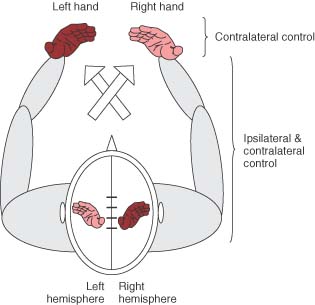
Homolateral and Contralateral are Developmental Movement Patterns.
Homolateral Movement (Body Half) is an asymmetrical movement of the upper limb and the lower limb on the same side.
Contralateral Movement (Opposition) is a diagonal movement of one upper limb with the opposite lower limb.
Homolateral Movement correlates to the movement of reptiles
Contralateral Movement correlates to the movement of mammals
From a developmental aspect, and if you subscribe to the notion that mind body are connected and that the way we move and the development of our intelligence are one, then Contralateral movement is a higher developmental stage.
Often when we learn something new that pertains to movement we will start with homolateral movement and then move to contralateral movement. This is whey you might see kids start to crawl in a homolateral movement first (moving right arm and leg together) and then develop into a Contralateral movement.
The higher intelligence is contralateral, and if we block this type of movement, or spend most of our day to day activities in homolateral behavior then we are not aligning ourselves with the way nature developed us. In a way you might say that we go back, we become more basic. Unfortunately when you look at the way modern society lives you can notice that we mostly have homolateral movement. Sitting in front of a screen and going to the gym all comprise of homolateral activities. Advances movement such as dance, martial arts, yoga all involve contra lateral movement. However this also includes walking. Walking is a contralateral movement pattern, and so it's really not necessary to do complex exercises as long as you walk.
Walk more you'll feel better and you'll be smarter
here is a reference to some basic cross over exercises
Refereces :
http://www.thefreelibrary.com/Whole+Brain+Exercises+Get+Your+Whole+Brain+Working+for+You-a01073927971
http://www.feelingfree.net/batteryproblems/crossover.htm
http://www.stolaf.edu/depts/dance/faculty/anthony/courses/Modern-Dance-Language.htm
http://wires.wiley.com/WileyCDA/WiresArticle/wisId-WCS36.html
 The Ming Men, "Gate of Life" is an essential part of traditional Chinese physiology. In Chinese martial arts there is a huge emphasis on keeping the life gate open during all movement and it is where the Yang energy originates and projects outwards. The location of the Ming Men is in the lower back between L4 and L5. What usually missed is the the life gate is located in the front of the spine.
The Ming Men, "Gate of Life" is an essential part of traditional Chinese physiology. In Chinese martial arts there is a huge emphasis on keeping the life gate open during all movement and it is where the Yang energy originates and projects outwards. The location of the Ming Men is in the lower back between L4 and L5. What usually missed is the the life gate is located in the front of the spine. 
